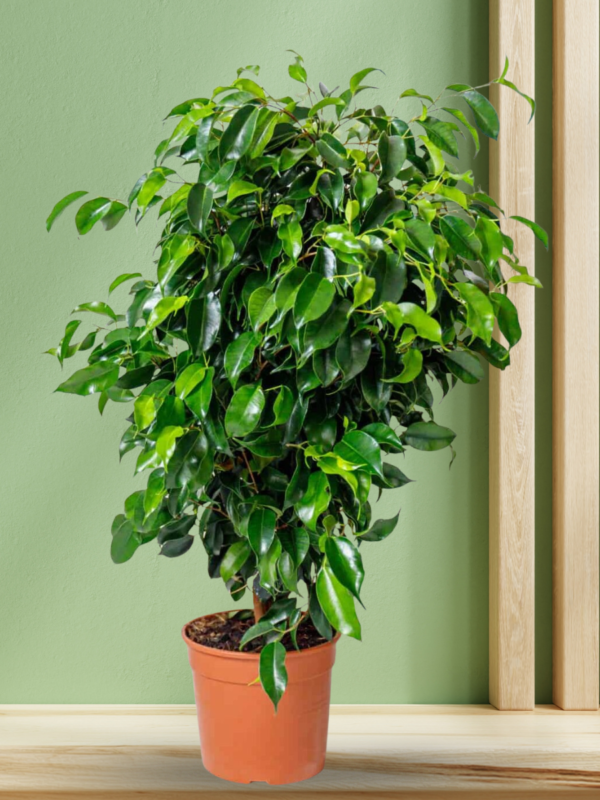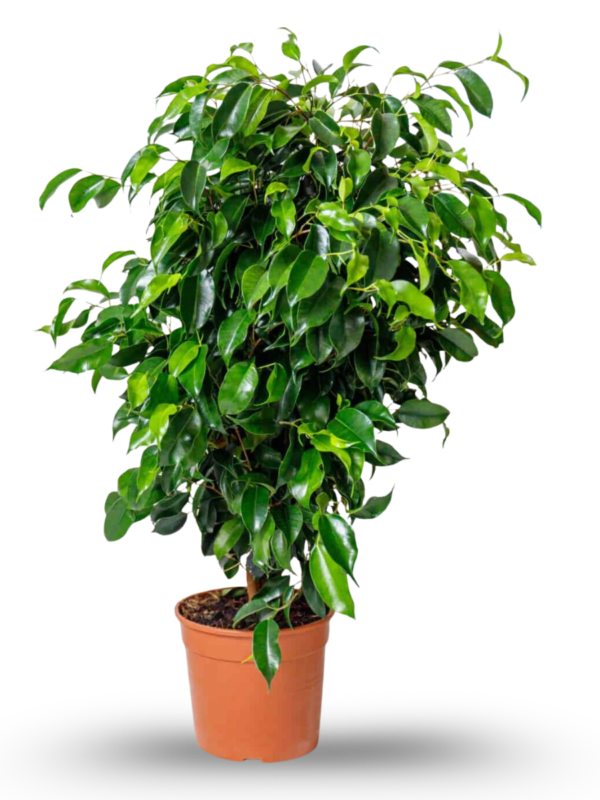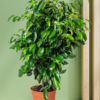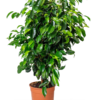Description
1. Botanical Information
-
Botanical Name: Ficus species
-
Common Names: Ficus, Fig Tree, Rubber Fig (for some varieties)
-
Family: Moraceae
-
Type: Evergreen tree or shrub; can also grow as a climber in some varieties
2. Origin & Distribution
-
Native To: Tropical and subtropical regions of Asia, Africa, and the Pacific Islands
-
Widely cultivated around the world for ornamental, indoor, and landscaping purposes
3. Physical Characteristics
-
Height & Spread: Varies with species; can range from 1 meter (for indoor varieties) to 20 meters tall (for outdoor trees)
-
Leaves: Broad, glossy, deep green leaves; some varieties have variegated leaves
-
Roots: Some species develop aerial roots, which can hang or attach to supports
-
Flowers & Fruit: Small, inconspicuous flowers; produces fig-like fruits in some species
-
Bark & Stem: Smooth to rough bark depending on the species; stems can be woody and strong
4. Growing Conditions
-
Light: Prefers bright, indirect sunlight; some outdoor varieties tolerate full sun
-
Soil: Well-draining, fertile soil; tolerates a variety of soil types
-
Watering: Keep soil consistently moist but not waterlogged; indoor varieties tolerate slight drying between watering
-
Temperature: Thrives in tropical to subtropical climates; indoor plants prefer 18–25°C
-
Humidity: Prefers moderate to high humidity
5. Maintenance & Care
-
Pruning: Regular pruning helps maintain shape and remove dead or yellowing leaves
-
Fertilization: Apply balanced liquid fertilizer during growing season for healthy growth
-
Pests/Diseases: Susceptible to mealybugs, spider mites, scale insects, and root rot if overwatered
-
Propagation: Commonly propagated through stem cuttings, air layering, or seeds
6. Uses & Benefits
-
Ornamental Value: Popular as indoor plants, bonsai, office décor, and garden landscaping
-
Air Purification: Known to improve indoor air quality by filtering toxins
-
Cultural & Religious Significance: Certain Ficus species are considered sacred in Hinduism and Buddhism
-
Shade & Landscaping: Outdoor varieties provide shade and aesthetic appeal in parks and streets
7. Lifespan
-
Evergreen perennial; indoor varieties can live 10–15 years, while outdoor trees can live for several decades to over 50 years





Reviews
There are no reviews yet.